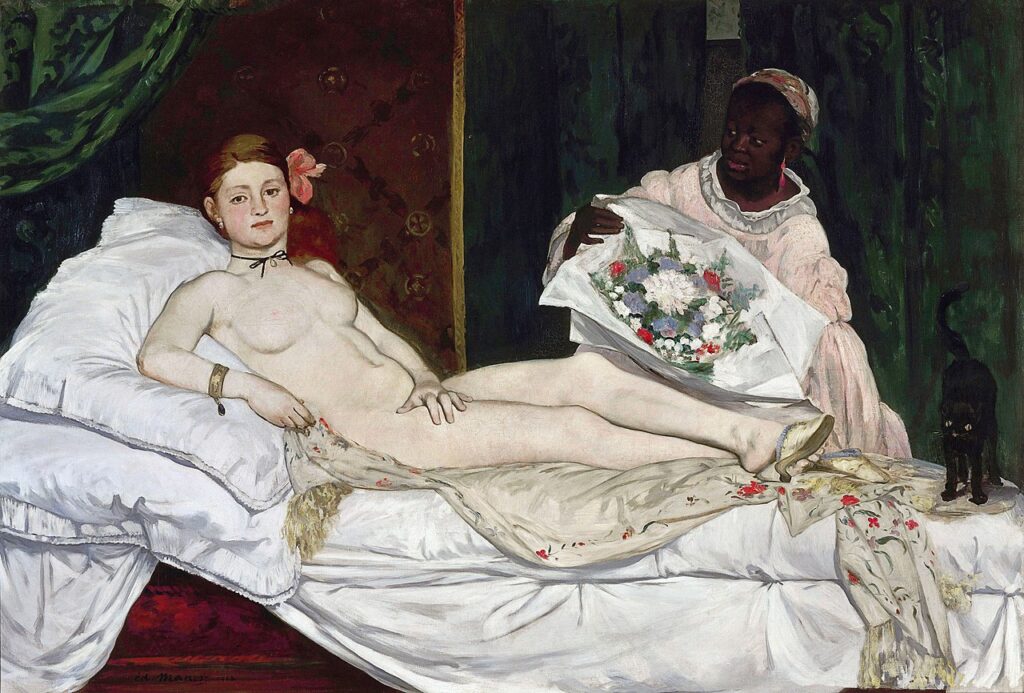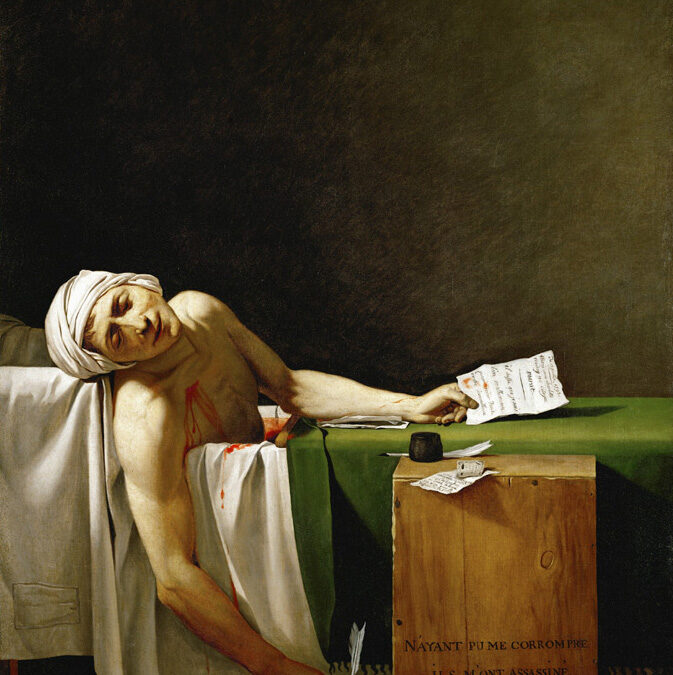Diving into the turbulent waters of artistic controversy: Unraveling the why behind provocative artists and their influential works.
Who is Édouard Manet?

Self-Portrait with Palette
A French modernist painter born in 1832, Manet’s artistic approach was ahead of his time. He challenged the traditional conventions of painting, particularly in his portrayal of contemporary life and the human figure. Manet’s refusal to adhere to the idealized representations of the female form prevalent in the academic art of his time caused significant controversy. By depicting his subjects with realism and candidness, he confronted societal norms and paved the way for the emergence of modern art. His work remains influential and continues to provoke thought and discussion about the nature of art and its role in reflecting the realities of the world.
We hope to explore and discuss two of his controversial works examining why these pieces caused such an uproar at the time of the creation.

“Olympia”
Édouard Manet’s painting “Olympia,” completed in 1863, caused significant controversy for several reasons:
Subject Matter
The painting depicts a reclining nude woman, Olympia, staring directly at the viewer, which was highly unconventional for the time. Unlike traditional nude paintings that often depicted mythological or historical figures, Manet’s subject is a contemporary woman, a prostitute. Her confrontation with modern life was considered shocking and inappropriate by many viewers. Her model, Victorine Meurent, was a recognizable figure to French society at the time, only increasing the scandalous implications.
Pose and Expression
Olympia is confident and has an unapologetic gaze. She effortlessly challenged conventional notions of femininity and propriety. Her relaxed pose and assertive demeanor contrasted sharply with the demure and passive representations of women typically found in art at the time. She held the viewer as if she could see past the paint and into you looking at her, daring you to look longer.
Eroticism vs. Idealization
Manet’s portrayal of Olympia is devoid of idealization or romanticism. He presents her as a real, flesh-and-blood woman, complete with imperfections and flaws. This departure from the idealized depiction of the female form in art was unsettling to contemporary audiences who were accustomed to seeing women portrayed as ethereal and otherworldly beings.
Symbolism and Social Commentary
“Olympia” was interpreted as a critique of the bourgeois values and sexual mores of 19th-century French society. The black servant presenting flowers to Olympia has been interpreted as a commentary on colonialism and the commodification of women. The painting’s boldness in addressing social issues added to its controversial nature.
Artistic Style
Manet’s loose brushwork and flattened perspective were considered unconventional and even crude by the standards of academic art at the time. Critics accused him of being careless and unfinished in his technique, further fueling the controversy surrounding the painting.

“Luncheon on the Grass”
“Le Déjeuner sur l’herbe” (“Luncheon on the Grass”), painted by Édouard Manet in 1863, was highly controversial for several reasons:
Subject Matter
The painting depicts a picnic scene with two fully clothed men and two nude women in a natural setting, which was unconventional for the time. The presence of nude women in a contemporary setting, surrounded by clothed men, challenged societal norms regarding nudity, propriety, and gender roles.
Nudity and Realism
Unlike traditional nude paintings that depict mythological or historical figures, Manet’s nudes are ordinary, modern women. Their nudity is not idealized or romanticized but presented in a straightforward, realistic manner, which was shocking to contemporary audiences accustomed to idealized depictions of the female form.
Ambiguity and Narrative
The ambiguous narrative of the painting puzzled viewers. The relationships between the figures and the nature of the gathering were unclear, leading to various interpretations. Some saw it as a scene of innocent leisure, while others interpreted it as suggestive or even scandalous.
Composition and Perspective
Manet’s choice to make the painting a staggering size of 81.9 by 104.1 inches perplexed viewers and critics. It was out of place among the other paintings of that size, traditionally depicting holy figures and dramatic historical recreations—subjects deemed worthy of such grand scale. Choosing to depict a mundane activity, such as lounging around at lunchtime, furthered the rebellious connotations of Manet’s work.
Social Commentary
“Le Déjeuner sur l’herbe” was seen as a commentary on contemporary society and its hypocrisies. The juxtaposition of nudity and clothed figures, as well as the casual intimacy of the scene, challenged bourgeois notions of morality and propriety, sparking intense debate about the role of art and its relationship to society.
In Conclusion
Manet’s ability to challenge conventions and provoke reactions speaks to the power of art as a catalyst for change. In unraveling the controversies, we uncover layers of meaning and significance that continue to resonate with audiences today, reminding us of the enduring impact of great art.




